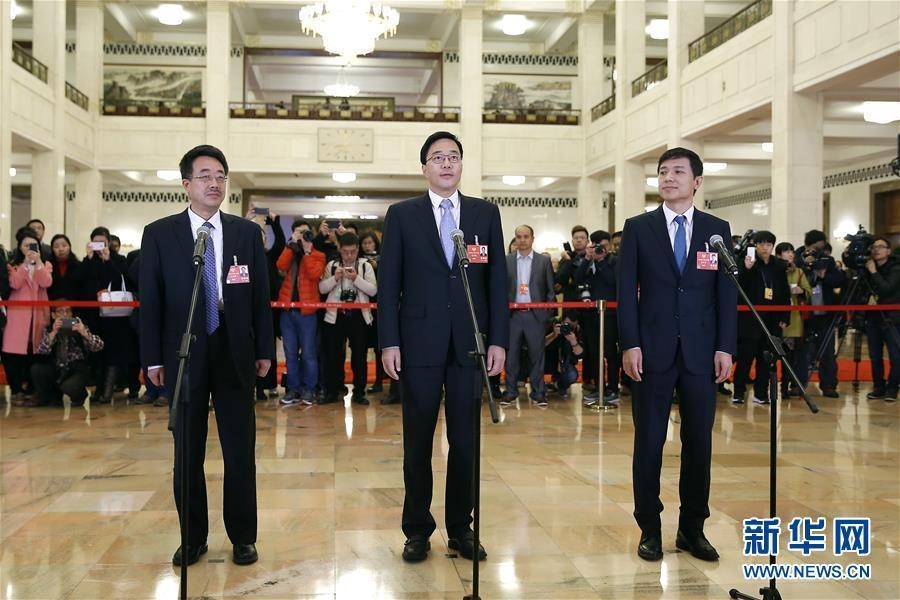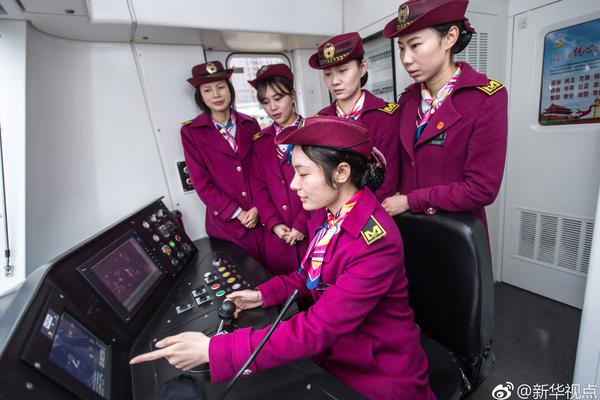
Support the implementation of enterprise strategy and ensure the successful implementation of business. Full-time coordination, everyone can use, the whole process is electronic, reduce HR transactional work, and create a prerequisite for the professional development of HR; customize business, meet management needs, help enterprises build their own HR system, and improve talent management ability. Perfect talent management system.
The benefits are to help the organization "find people and use good people" to better help the organization find people, whether it is the internal promotion of internal personnel, or the docking of major external recruitment websites, intelligent resume analysis, and more accurate and convenient recruitment of suitable personnel.
Reduce costs and increase efficiency. Take manufacturing enterprises as an example, the expenditure cost mainly comes from production costs and employee salaries, while the personnel management system can assist managers in planning employee positions, personnel arrangement, workload analysis, labor cost calculation, etc.

ERP is the abbreviation of Enterprise Resource Planning, which refers to a system based on information technology to help enterprises build a system to manage various businesses.
ERP is the abbreviation of EnterpriseResourcePlanning in English, which means enterprise resource planning in Chinese. It is an information system with management accounting as the core, identifying and planning enterprise resources, so as to obtain customer orders, complete processing and delivery, and finally receive customer payments.
ERP system is the abbreviation of Enterprise Resource Planning, which refers to the basis of information technology.Information technology and advanced management ideas are one in one, and a management platform that provides decision-making means for enterprise employees and decision-making levels with systematic management ideas.
ERP is a system built on the basis of information technology to help enterprises build a system to manage various businesses. Unlike the OA of the enterprise, it is a management information system that integrates all the resources of the enterprise. Simply put, it is a management information system that comprehensively integrates the three flows of the enterprise: logistics, capital flow and information flow.
Human resources management system is a management tool that rationalizes, simplifies and optimizes human resources management. The ERP human resources system can standardize, integrate and integrate various personnel data to achieve timely and accurate information, standardized and efficient management, and support the optimal allocation of human resources.
may not be suitable. Generally speaking, if the enterprise is large and has an obvious demand for improving work efficiency, it is recommended to use the human resources system. Enterprises should make appropriate choices based on their own situation, budget and needs.
The specific quality of the human resources management system depends on the specific system design, implementation and usage. Generally speaking, an easy-to-use human resources management system should have the following characteristics: interface friendly: the system should be simple in design, easy to operate, and users can quickly learn and get started.
System ease of use: A good human resources management system should have good user experience and ease of use, the operation process of the system should be simple and clear, and the user learning curve should be small.
1. The six modules of human resources management system specifically refer to: human resources planning, recruitment and allocation, training and development, performance management, remuneration and welfare management, and labor relations management.
2. Six modules: human resources planning; recruitment and allocation; training and development; assessment and evaluation; remuneration and welfare management; labor relations.
3. The five major modules are: human resources planning, recruitment and allocation, training and development, performance management, remuneration and welfare management, and labor relations management. ( 1) Human resources planning is the starting point of human resources management. It mainly helps organizations predict the expected future number of personnel demand and basic quality composition through planning.
4. Specifically refers to: human resources planning, recruitment and allocation, training and development, performance management, remuneration and welfare management, and labor relations management. Although the major modules have their own priorities, they are closely related. The lack of any link will affect the imbalance of the whole system, which is an organic whole.
5. Human resources planning, recruitment and distribution, training and development, performance management, remuneration and welfare management, labor relations management.
Binance Download for PC Windows 10-APP, download it now, new users will receive a novice gift pack.
Support the implementation of enterprise strategy and ensure the successful implementation of business. Full-time coordination, everyone can use, the whole process is electronic, reduce HR transactional work, and create a prerequisite for the professional development of HR; customize business, meet management needs, help enterprises build their own HR system, and improve talent management ability. Perfect talent management system.
The benefits are to help the organization "find people and use good people" to better help the organization find people, whether it is the internal promotion of internal personnel, or the docking of major external recruitment websites, intelligent resume analysis, and more accurate and convenient recruitment of suitable personnel.
Reduce costs and increase efficiency. Take manufacturing enterprises as an example, the expenditure cost mainly comes from production costs and employee salaries, while the personnel management system can assist managers in planning employee positions, personnel arrangement, workload analysis, labor cost calculation, etc.

ERP is the abbreviation of Enterprise Resource Planning, which refers to a system based on information technology to help enterprises build a system to manage various businesses.
ERP is the abbreviation of EnterpriseResourcePlanning in English, which means enterprise resource planning in Chinese. It is an information system with management accounting as the core, identifying and planning enterprise resources, so as to obtain customer orders, complete processing and delivery, and finally receive customer payments.
ERP system is the abbreviation of Enterprise Resource Planning, which refers to the basis of information technology.Information technology and advanced management ideas are one in one, and a management platform that provides decision-making means for enterprise employees and decision-making levels with systematic management ideas.
ERP is a system built on the basis of information technology to help enterprises build a system to manage various businesses. Unlike the OA of the enterprise, it is a management information system that integrates all the resources of the enterprise. Simply put, it is a management information system that comprehensively integrates the three flows of the enterprise: logistics, capital flow and information flow.
Human resources management system is a management tool that rationalizes, simplifies and optimizes human resources management. The ERP human resources system can standardize, integrate and integrate various personnel data to achieve timely and accurate information, standardized and efficient management, and support the optimal allocation of human resources.
may not be suitable. Generally speaking, if the enterprise is large and has an obvious demand for improving work efficiency, it is recommended to use the human resources system. Enterprises should make appropriate choices based on their own situation, budget and needs.
The specific quality of the human resources management system depends on the specific system design, implementation and usage. Generally speaking, an easy-to-use human resources management system should have the following characteristics: interface friendly: the system should be simple in design, easy to operate, and users can quickly learn and get started.
System ease of use: A good human resources management system should have good user experience and ease of use, the operation process of the system should be simple and clear, and the user learning curve should be small.
1. The six modules of human resources management system specifically refer to: human resources planning, recruitment and allocation, training and development, performance management, remuneration and welfare management, and labor relations management.
2. Six modules: human resources planning; recruitment and allocation; training and development; assessment and evaluation; remuneration and welfare management; labor relations.
3. The five major modules are: human resources planning, recruitment and allocation, training and development, performance management, remuneration and welfare management, and labor relations management. ( 1) Human resources planning is the starting point of human resources management. It mainly helps organizations predict the expected future number of personnel demand and basic quality composition through planning.
4. Specifically refers to: human resources planning, recruitment and allocation, training and development, performance management, remuneration and welfare management, and labor relations management. Although the major modules have their own priorities, they are closely related. The lack of any link will affect the imbalance of the whole system, which is an organic whole.
5. Human resources planning, recruitment and distribution, training and development, performance management, remuneration and welfare management, labor relations management.
 OKX Wallet apk download latest version
OKX Wallet apk download latest version
917.63MB
Check OKX Wallet APK
OKX Wallet APK
981.91MB
Check OKX Wallet app
OKX Wallet app
425.86MB
Check Binance login
Binance login
339.85MB
Check OKX download
OKX download
973.14MB
Check Binance APK
Binance APK
176.33MB
Check Binance download
Binance download
464.21MB
Check OKX app
OKX app
339.72MB
Check Binance market
Binance market
792.65MB
Check Binance Download for PC Windows 10
Binance Download for PC Windows 10
318.66MB
Check Binance wikipedia
Binance wikipedia
255.29MB
Check Binance wallet
Binance wallet
131.42MB
Check Binance app
Binance app
367.43MB
Check OKX download
OKX download
391.59MB
Check OKX review
OKX review
515.69MB
Check Binance download
Binance download
579.66MB
Check Binance app
Binance app
286.36MB
Check Binance login
Binance login
292.88MB
Check Binance US
Binance US
714.86MB
Check OKX Wallet Sign up
OKX Wallet Sign up
161.41MB
Check Binance login
Binance login
366.19MB
Check OKX Wallet apk download latest version
OKX Wallet apk download latest version
154.67MB
Check OKX app
OKX app
866.92MB
Check Binance app
Binance app
759.32MB
Check OKX Wallet app
OKX Wallet app
152.61MB
Check Binance app download Play Store
Binance app download Play Store
867.63MB
Check Binance login
Binance login
161.99MB
Check Binance download APK
Binance download APK
949.23MB
Check Binance login
Binance login
152.51MB
Check Binance US
Binance US
447.93MB
Check Binance US
Binance US
294.82MB
Check Binance app
Binance app
232.81MB
Check Binance login
Binance login
858.64MB
Check Binance app download Play Store
Binance app download Play Store
997.35MB
Check OKX Wallet to exchange
OKX Wallet to exchange
675.31MB
Check Binance app
Binance app
981.55MB
Check
Scan to install
Binance Download for PC Windows 10 to discover more
Netizen comments More
2153 精神百倍网
2025-01-23 10:00 recommend
2259 百二山河网
2025-01-23 09:43 recommend
2182 沉吟未决网
2025-01-23 09:06 recommend
2254 累瓦结绳网
2025-01-23 08:20 recommend
1653 车怠马烦网
2025-01-23 08:04 recommend